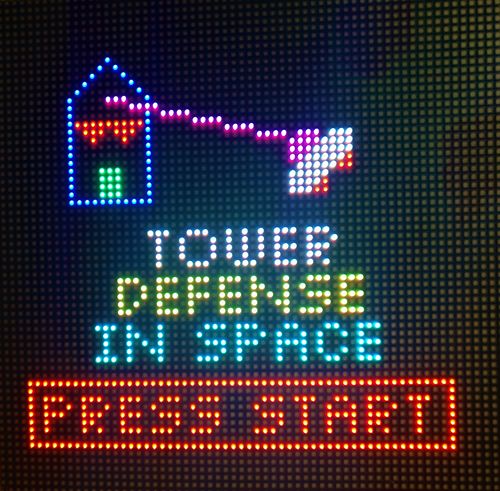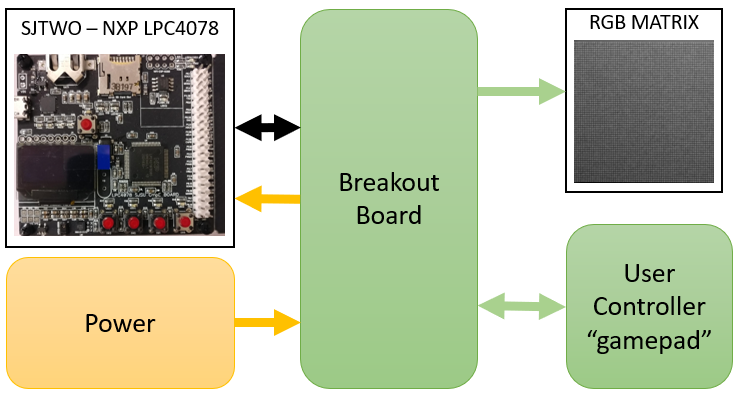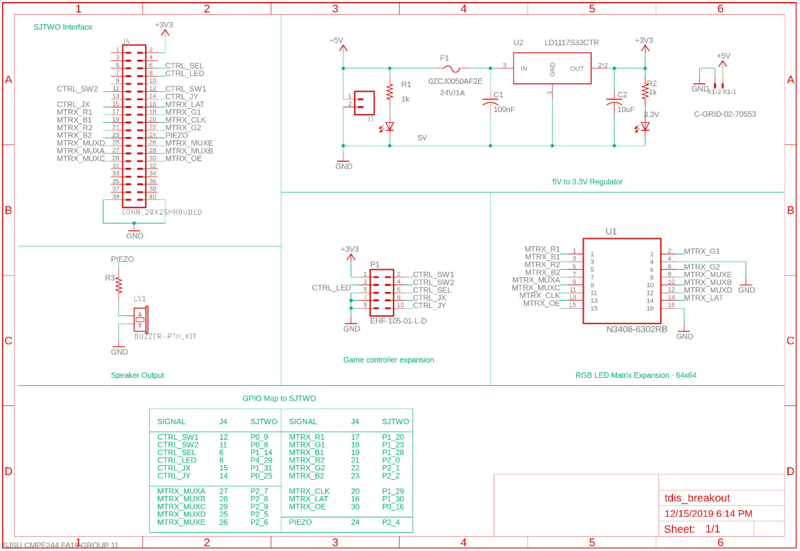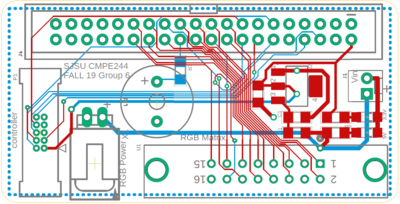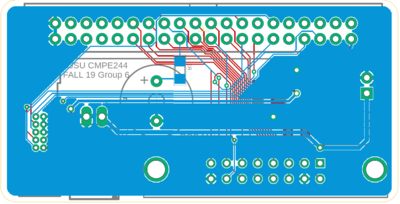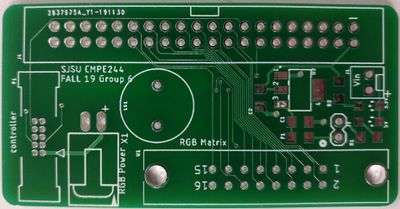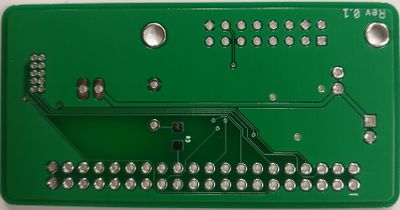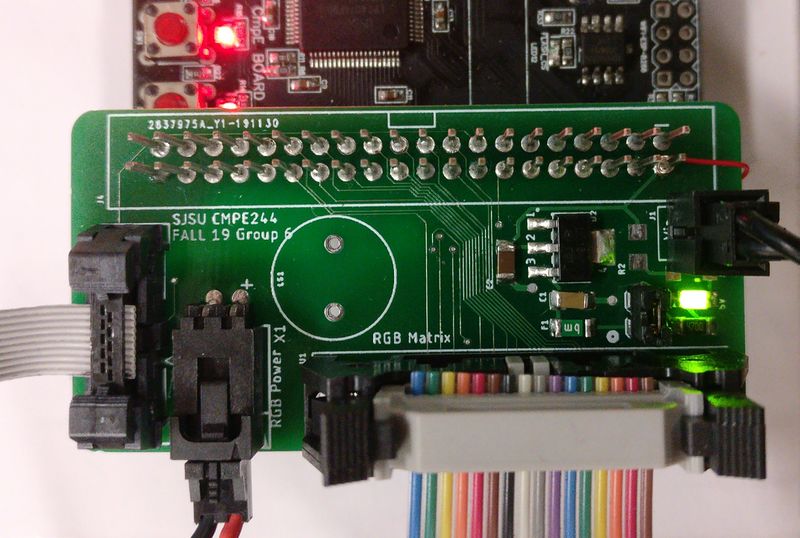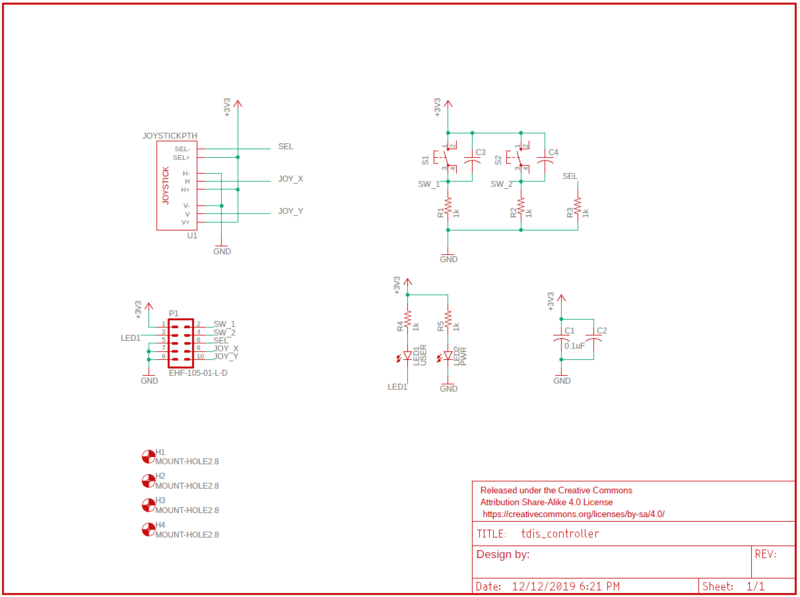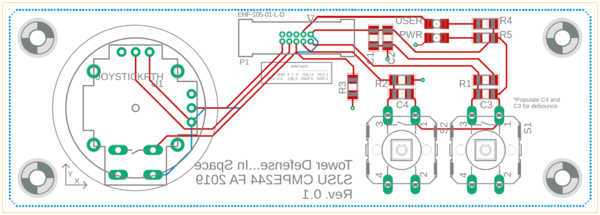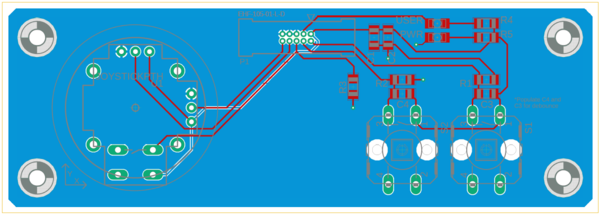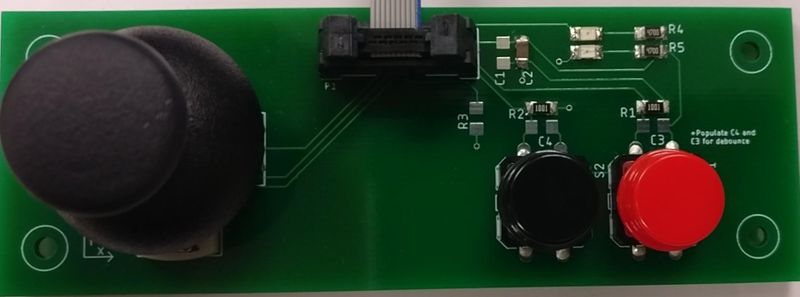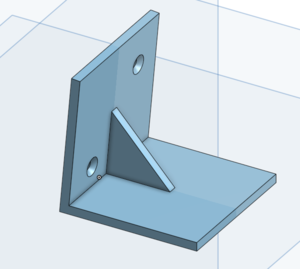Difference between revisions of "F19: Tower Defense in Space"
Proj user10 (talk | contribs) (→Hardware Design) |
Proj user10 (talk | contribs) (→Schedule) |
||
| Line 204: | Line 204: | ||
| | | | ||
<br/> | <br/> | ||
| − | * <span style="color: | + | * <span style="color:green">Complete</span> <br /> |
<br/> | <br/> | ||
| − | * <span style="color: | + | * <span style="color:green">Complete</span> <br /> |
<br/> | <br/> | ||
* <span style="color:green">Complete</span> <br /> | * <span style="color:green">Complete</span> <br /> | ||
| Line 221: | Line 221: | ||
* Critical bugs (software AND hardware) identified and a clear path towards closure has been identified<br/> | * Critical bugs (software AND hardware) identified and a clear path towards closure has been identified<br/> | ||
| | | | ||
| − | * <span style="color: | + | * <span style="color:green">Complete</span> <br /> |
* <span style="color:green">Complete</span> <br /> | * <span style="color:green">Complete</span> <br /> | ||
| Line 231: | Line 231: | ||
* Implement any potential optimizations and/or expansions | * Implement any potential optimizations and/or expansions | ||
| | | | ||
| − | * <span style="color: | + | * <span style="color:green">Complete</span> <br /> |
| − | * <span style="color: | + | * <span style="color:green">Complete</span> <br /> |
|} | |} | ||
Revision as of 22:26, 18 December 2019
Contents
- 1 Grading Criteria
- 2 Tower Defense...In Space!
- 3 Abstract
- 4 Introduction and Objectives
- 5 Team Members
- 6 Schedule
- 7 Bill of Materials
- 8 System Design
- 9 Hardware Design - Electrical
- 10 Hardware Design (Mechanical)
- 11 Hardware Integration
- 12 Software Design
- 13 System Testing and Validation
- 14 Technical Challenges
- 15 Conclusion
Grading Criteria
- How well is Software & Hardware Design described?
- How well can this report be used to reproduce this project?
- Code Quality
- Overall Report Quality:
- Software Block Diagrams
- Hardware Block Diagrams
- Schematic Quality
- Quality of technical challenges and solutions adopted.
Tower Defense...In Space!
Tower Defense ... In Space.
Abstract
My abstract goes here.
Introduction and Objectives
intro here please.
Team Members
|
TEAM MEMBERS & RESPONSIBILITIES | ||||
|---|---|---|---|---|
|
Team Members |
Administrative Roles |
Technical Roles | ||
|
Team Lead |
| ||
|
Git Repo Manager |
| |||
|
Wiki Report Manager |
| ||
|
Bill of Materials Manager |
| ||
Schedule
|
TEAM MEETING DATES & DELIVERABLES | ||||
|---|---|---|---|---|
|
Week# |
Date Assigned |
Deliverables |
Status | |
| 1 | 10/15/19 |
|
| |
| 2 | 10/22/19 |
|
| |
| 3 | 10/29/19 |
|
| |
| 4 | 11/5/19 |
Kelvin
|
| |
| 5 | 11/12/19 |
Kelvin
Polin
Ryan
Zach
|
| |
| 6 | 11/19/19 |
Kelvin
Polin
Ryan
Zach
|
| |
| 7 | 11/26/19 |
Kelvin
Polin
Ryan
Zach
|
| |
| 8 | 12/3/19 |
|
| |
| 9 | 12/10/19 |
|
| |
Bill of Materials
|
Top Level | ||||
|---|---|---|---|---|
|
PART NAME |
PART MODEL & SOURCE |
QUANTITY |
COST PER UNIT (USD) | |
| |
|
|
| |
| |
|
|
| |
| |
|
|
| |
| 64x64 RGB LED Matrix* | Adafruit | 1 | $104.07 | |
| 5V 4A PSU | - | 1 | FREE | |
|
Breakout Board PCB** | ||||
|---|---|---|---|---|
|
Item # |
PART NAME |
PART SOURCE |
QUANTITY |
COST PER UNIT (USD) |
| 1 | IC REG LINEAR LD1117S33CTR | DIGIKEY | 5 | $0.351 |
| 2 | MHS16N-ND 16POS CONN 2.54MM | DIGIKEY | 2 | $2.60 |
| 3 | CAP CER 0.1UF 25V X7R 1206 | DIGIKEY | 5 | $0.221 |
| 4 | CAP CER 10UF 16V X5R 1206 | DIGIKEY | 5 | $0.202 |
| 5 | RES SMD 470 OHM 1% 1/4W 1206 | DIGIKEY | 10 | $0.0267 |
| 6 | PTC RESET FUSE 24V 500MA 1206 | DIGIKEY | 10 | $0.1588 |
| 7 | CONN SOCKET 40POS 0.1 TIN PCB | DIGIKEY | 2 | $5.03 |
| 8 | Manufacturing x 5 boards * | JLCPCB | 1 | $29.81 |
|
Gamepad PCB** | ||||
|---|---|---|---|---|
|
Item # |
PART NAME |
PART SOURCE |
QUANTITY |
COST PER UNIT (USD) |
| 1 | Analog 2-axis Thumb Joystick w/ select button | Amazon | 1 | $7.67 |
| 2 | SAM8205-ND 10POS 1.27MM | DIGIKEY | 5 | $3.38 |
| 3 | LED GREEN 1206 SMD | DIGIKEY | 5 | $0.24 |
| 4 | LED RED 1206 SMD | DIGIKEY | 5 | $0.257 |
| 5 | RES 1K OHM 1% 1/2W 1206 SMD | DIGIKEY | 5 | 0.0358 |
| 6 | CAP CER 0.1UF 50V X7R 1206 | DIGIKEY | 5 | $0.088 |
| 7 | 12x12x7.3mm Tactile Push Button w/ cap (pack of 25) | Amazon | 1 | $7.89 |
| 8 | Manufacturing x 5 boards * | JLCPCB | 1 | $14.21 |
* Shipping and tax included in value shown in the cost per unit column
** Only parts that were purchased are displayed.
System Design
System Block Diagram
Hardware Design - Electrical
Overview
At a high level hardware integration requirements fell into two categories:
1. Reduce risk of unreliable cable connections and eliminate possibility of damage to components through unexpected disconnections, power surges, etc.
2. Provide a more fluid physical interface for the user to interact with the game via hardware
To accomplish these goals, two boards were designed: a breakout board and a gamepad controller. The breakout board serves as a connection hub between all system hardware components; power, the RGB matrix, the SJTWO board, etc. while the joystick provides a cleaner package to present the user with the games inputs. The diagram below shows the relationship between the main subsystems:
All board designs were done using EAGLE and manufactured by JLCPCB. Both boards were only two layers and used passive components for the most part.
Breakout Board Design
The breakout board design requirement was to interface all external hardware components with the embedded system (SJTWO). The hardware connections are:
1. The 64x64 RGB Matrix
2. Output power to the RGB Matrix
3. User game controller (see next section)
4. Input power supply (5V)
5. The SJTWO embedded system
Gamepad Hardware Design
The gamepad board design requirement was to provide a more packaged interface for the user to interact with the game.
Hardware Design (Mechanical)
Only a few mechanical components were needed for this project. Namely simple brackets for mounting electrical hardware to the RGB matrix and displaying the matrix itself. All CAD designs were done using Onshape, a free CAD tool that can be used entirely through your web browser.
For displaying the RGB matrix, two brackets were 3D printed to prop it up. Their STL files can be found under our source repository.
Hardware Integration
(rgb matrix driver, stuff like that)
Software Design
System Flow Charts
System Testing and Validation
Technical Challenges
The mp3 decoder1053b's document is a kind of confusing for the mode when 1032b have several modes, hence doing the survey on the GitHub is really important. For example, using the sin wave and hello binary example to test how the Initialization and HZ parameter would save a lot of time. Besides, we also have to be careful to check the SJBoard's SPI because of the SD card reader is using for reading SDcard. Hence, I would recommend using other SPI0, SPI1 instead of using SPI2.
Conclusion
Conculsion please.
